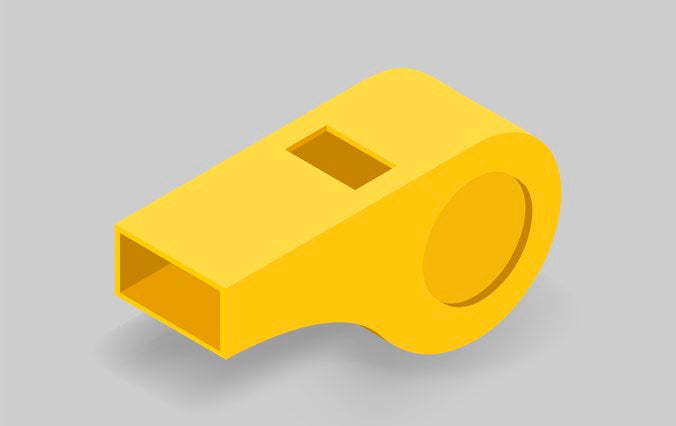Hawaiian South Shore August 2020 Newsletter
Share
NEWSLETTER AUGUST 2020

SURF ETIQUETTE
As most of us know, the complexities of surf etiquette can seem pretty overwhelming at times. But for those who understand how lineups work, there really shouldn’t be any confusion—so if someone is breaking etiquette, they are probably either ignorant or selfish. Let’s address ignorance first, and selfishness second.
Nearly all waves break in a specific direction—either left or right. (An obvious
exception would be Canoes in Waikiki, which is essentially a straight hander, and that’s why you often see 20 people on the same wave and they are all getting along great.) A-frame peaks like Pipeline and Backdoor break in both directions, but we tend to think of the two waves as separate entities, so Pipeline is a left and the other side of the peak at Backdoor is a right, and everything that follows applies to both separately.
In general, the surfer who is closest to the peak has priority or right of way. In other words, whoever is deeper gets the wave, because they can ride it the longest, and in most cases, they can get to their feet first. (If you don’t understand why only one person should be riding a wave, then you are likely very new to surfing, and you should limit yourself to waves like Canoes.) This can get a bit confusing when guys are taking off behind the peak to backdoor a section, but in general, if you are paddling for a wave and look over your shoulder and someone is riding or taking off behind you, then it is their wave.
That being said, if everyone just paddled deeper than everyone else so that they could have priority, the lineup would be a pretty chaotic place, and eventually, everyone would jockey each other straight off of the peak. Thus, there are some understood etiquette rules that keep the lineup in order, and they are pretty darn obvious. The most basic of these is that everyone needs to wait for their turn. Unless there are 100 people out on the peak, people usually know whose turn it is—or at the very least, where their relative place is in the lineup. When paddling out, you
should assume that everyone who is already in the lineup before you has priority over you. If everyone follows that basic rule, then a revolving pecking order will naturally sort itself out. If only it were that simple.
Unfortunately, there are a bunch of variables that make surf etiquette more complicated than that. First of all, not everyone wants to surf every section of a wave. Some people are less comfortable taking off from deep, especially at heavier waves, and will hang out on the shoulder. If you are one of these people,
then you may want to consider surfing a spot where you are more comfortable. Not only will you appreciate the wave more, but you are
surfers who are comfortable at heavier spots, and you are also less likely to get frustrated because you are never deep enough to have priority. Because even though the general rule is that everyone needs to wait for their turns, if someone is not riding from the peak of the wave, to some extent they give up whatever
priority they might have had.
Another variable is that some people wait for specific waves—whether big sets, or small inside runners, or waves that swing wide and hit the reef differently. Thus, there may be times when the surfer who has been waiting for the longest won’t choose to go on a wave. If that happens, then the surfer who has been waiting for the second-longest has priority, and so on and so forth.
Of course, it can become a bit difficult to keep track of everyone’s position in the priority line, which is why people tend to sit in order from the peak down toward the shoulder. When someone catches a wave, everyone behind them moves up farther toward the peak, and the lineup is maintained. But those who are feeling greedy and selfish might think that they can just back-paddle the pack and sit
deepest even if they haven’t been waiting the longest, and thereby usurp priority. This is not good etiquette, and it is generally frowned upon. While you might get away with it once or twice, if you continue to back-paddle and assume you have priority, you are eventually either going to get burned or get a talking to. Plus, you are generally just being a donkey, and no amount of wave count is going to make you feel better about being a donkey.
Now there are times when the people in the lineup may not be sitting in the right position, or may not be able to surf the wave to its full potential from the deepest, most critical section. If you paddle into this situation and find that the crowd is not sitting where you’d like to take off on the wave, it is permissible to paddle deeper, assuming a few things to be true. First, you had better be a proficient enough surfer to actually surf the wave from where you are sitting. Second, just because
you have paddled deeper than everyone doesn’t mean that you automatically have priority. The guys who you paddled past have still been waiting longer than you, so unless their positioning is going to make them miss the wave completely (ALL of them), you shouldn’t go just because you hold the inside position. In fact, while you are paddling past the pack to your spot, it’s nice to give a friendly
the explanation that you are paddling past them to surf from a deeper section of the wave, but that you know they have all been waiting, and that it is understood that they all still have priority over you. Then, once your turn is up—or if a wave comes through that you know for sure none of them will be in position to catch—you can get a wave from your spot.
While that beings to explain general surf etiquette, there are still a few more layers to unravel here. First of all, if someone is surfing a wave that is above their skill level, and is repeatedly falling on the takeoff to the point where you can assume that they are not going to make the drop, it is acceptable to paddle for a wave they are going for and catch it after they have fallen. The same hold’s true if you see someone coming down the line from too deep, and you are certain they are not going to make the section and get to where you are taking off. But you want to be careful when making these assumptions, and err on the side of caution, because if they end up making the wave and you burn them, you are being a jerk.
Also, local lineups tend to have pecking orders made up of people who have put their time in and understand the wave intimately. This is a controversial subject with many people, because some feel that locals have earned the right to back-paddle or burn newcomers, while others believe that everyone has equal
rights to waves. In my opinion, it doesn’t matter if you have been surfing there for 50 years or 15 minutes, just as it doesn’t matter if you are the best surfer in the water or the worst—the general principle of sharing and taking your turn still applies. Any experienced surfer knows when they are being a wave hog, and again, you aren’t making anyone’s day better by acting like that—yours included.
That being said, people who are new to surf spots should respect the fact that others have been surfing there for a long time, and that they may have a better understanding of the wave. So when you approach a new spot, do so slowly. Watch from the shoulder for a few minutes, get a feel for where everyone is sitting and whose turn it is, and then slowly integrate yourself into the rotation. Don’t just
paddled out and go straight to the top of the peak, because not only does that make you a greedy jerk, but you also aren’t going to make any friends. In fact, you might just get yourself sent in.
Finally, we have the issue of shortboarders and longboarders/SUPs. Some people think that longboarders shouldn’t be surfing “shortboard waves,” and I’ve actually seen someone yell at shortboarders for surfing a “longboard wave.” Personally, I believe that it is more important to make an honest evaluation of your abilities as a surfer. There are longboarders and SUP surfers who can surf high-performance waves or charge Pipeline as well as those on more conventional craft, just as there are those who rip apart traditional logging waves like Malibu on shredsticks. If you are surfing within your ability level, then I believe it’s okay to surf a longboard at a “shortboard spot.” But that doesn’t mean it’s okay to be a wave hog. Just because you can paddle into waves earlier than everyone else in the lineup doesn’t mean that you have infinite priority. It all comes back
to the general rule of waiting your turn. No matter what you are riding, take stock of the lineup, figure out your place in it, and wait until your number is up.
Even if you are a professional surfer sharing the lineup with a bunch of beginners, there is no reason to be a pig. The bottom line is that just because you can take a wave doesn’t mean you should. Take turns and share waves, and you just might find that it’s as enjoyable to see someone else score as it is to ride one yourself.
How a Tilting Bed Helped My Parents Sleep Better
As you probably know, a lot of people around Recent studies have indicated that most of us aren’t sleeping enough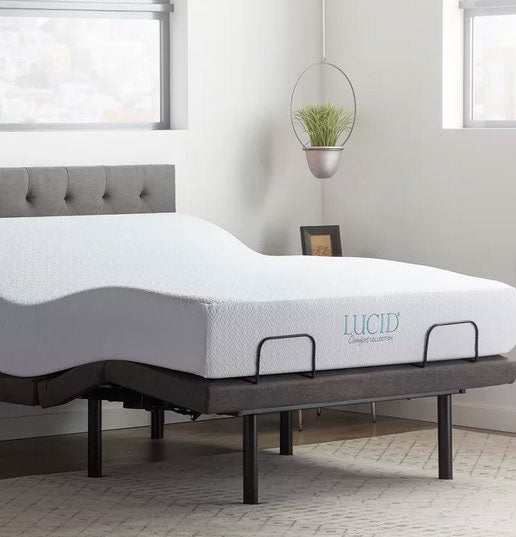
and that a lack of sleep can have a drastic mental and physical impact on us—even leading to an increase in heart attacks and depression. Many of us don’t get enough sleep because we spend too much time working or watching TV, but others struggle to get enough sleep due to physiological reasons.
My father has had sleep apnea for over 10 years. For those of you who don’t know what sleep apnea is, it’s when the throat muscles partially close during sleep and cause you to stop breathing. This often results in restless, inadequate sleep, since every time you stop breathing you wake up for a second so that you can begin breathing again.
One way to deal with sleep apnea is to wear a mask called a CPAP machine. Unfortunately, these can be quite loud, which makes it difficult for other people near you to sleep. My dad wears a mask at night, but still struggles with sleeping through the night. And of course my mom also struggles to sleep, not only because of the sound of the CPAP mask, but also because every time my dad stops breathing it wakes her up and freaks her out. For years, she would go sleep in the living room, just to try to get a few hours of shuteye.
A few months ago, my dad was researching beds, and found some that tilt up to help raise your head and back. This type of bed supposedly helps you sleep better, and my dad eventually decided to buy one, even though they are quite expensive. The first night in that bed, he and my mom slept better than they had in years. Mom usually wakes up super early every morning, around 5:00 am, but that first night in the new bed she slept until 9:00 am. They have had the bed for three months now, and call me all the time, raving about it, showing me videos,
etc. They don’t often call me to tell me about the things they have bought, but the bed has really impressed them. Dad has stopped snoring at night and doesn’t have to use his CPAP mask anymore. Mom has also stopped snoring and is sleeping through the night, rather than being woken up by Dad’s sleep apnea.
There is often a lot of hype around a lot of different products, and beds are no exception. It is often difficult to know what is actually true, and what is just clever marketing. But I can tell you, from a reliable source (the most reliable source in my life, actually!) that these tilting beds work great!
August Member of the Month
Q & A with Daryl Asato
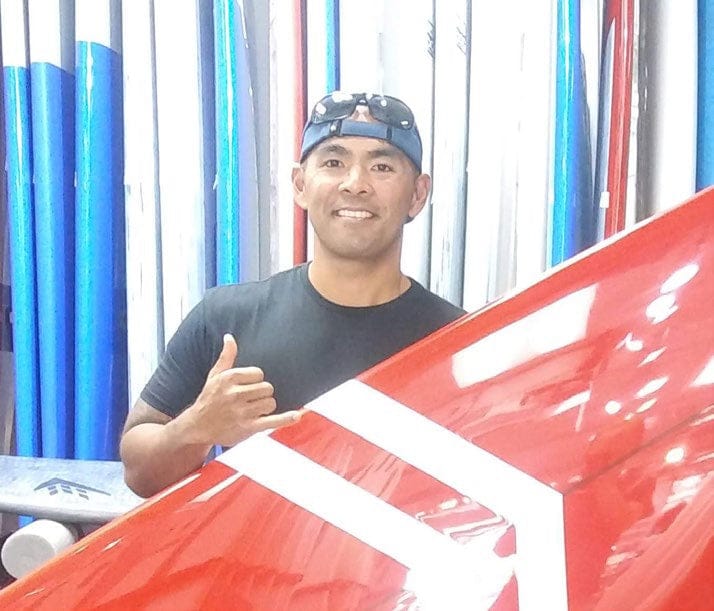
When and why did you initially get into
surfing?
In 1999, I bought my first board from T&C. It was a 10’0” Griffin. It was because my friends and I were bodyboarding a lot and wanted to try surfing. I remember paddling out for the first time and how sore my shoulders were, thinking to myself, “This is supposed to be fun, right?” When I finally caught my first wave and stood up, I was hooked.
Did you have a time period you laid off from surfing? If so, when and why did you start back up?
For about two years, life was a little hectic. From building my house to becoming a new dad, there was simply no time. I would say in the past six years, I’ve made it a priority to surf when I can.
What is your favorite thing about surfing?
I love the feeling you get when you’re up and riding. It’s a great way to relieve stress. I like that you can make new friends, see old friends and “talk story”. I also enjoy summer surf sessions with my wife Lianne.
Where is your favorite place to eat after surfing?
My favorite place would have to be Rainbow Drive-In. The mix plate is my go to.
What other hobbies do you have besides surfing?
Running, working out, and chauffeuring my kids to their sports and dance classes.
What type of work do you do?
I am a firefighter for the City and County of Honolulu. I am currently at the station in Kaimuki. Tell us about the board you recently purchased from us.
What model and size is it, and how do you like its performance?
I recently purchased a 9’5” Kai Sallas Camper in Thunderbolt Red. This board is awesome. It’s the best progressive, noseriding longboard I’ve ever had. Thunderbolt technologies really changed the game in surfboard construction.
Do you have any additional comments?
The crew at HSS are genuinely great people. They are super helpful whenever I stop by to look at boards. Brett even offered to let me demo one of his personal boards!! Truly grateful for their “local style” customer service.
Firewire Gives Away 100 Surfboards to First Responders
The past few months have been hard ones, no matter where you are, but first responders have played a major role in helping humanity get through this pandemic. Between nurses, paramedic, doctors, and police officers, these brave people on the front lines have helped keep us safe and healthy—or helped us regain health when COVID-19 strikes.
To help say thank you to our brave first responders, Firewire recently stepped up
with an amazing giveaway—they’d give one free surfboard to a first responder for every surfboard sold, up to a total of 100 boards. Here at Hawaiian South Shore we were super excited to hear about this getaway, especially because we stock Firewires here at the shop. The idea that every Firewire board we sell here at HSS equates to a free board for doctor or nurse or even lifeguard got me so fired up!
Once the giveaway began and I started hearing about the first responders getting
boards, I got even more excited! As it turned out, a few people here in Hawaii ended up winning! And the coolest thing was that the winners got to choose the exact Firewire board they wanted! This month we will be celebrating our first responders and profiling some of the Firewire winners here in Hawaii. Join us in thanking them for their service!
Trip and congratulations on winning the Harley 9’1 HI4 Carbon in Firewires Responder Stoke giveaway. Let us know how it surfs! Mahalo

Kevin is super stoked that he won a surfboard from @firewiresurfboards.
He choose Harley Ingleby Moe. I am sure he’ll love it!
Congratulations Kevin!
How Timmy Reyes Helped Create the Helium Hydroshort
California’s Timmy Reyes has been a free surfing fixture for two decades. From his young days as an up-and-coming grom to his current legend status as a feral explorer of frigid barrels, Timmy has been shaping surf culture since he was an adolescent, and his edits continue to get us pumped up to drive a bit farther, pull on some rubber, and have an adventure.
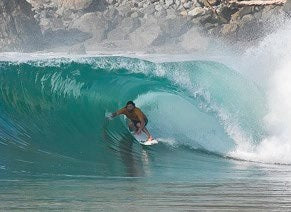
As it turns out, Timmy Reyes is influential in the surfboard design realm as well. Timmy got on one of Kelly Slater’s Hydroshorts (made by Tomo) a few years back, built in Firewire’s LFT construction. He connected with the board right off the bat, and ended up having Tomo make him one in Helium construction as
well. Timmy took both down to Baja with him to shoot an edit called Love Letter in Mexico, and had the chance to ride both boards in pumping waves—the perfect way to compare the two construction styles.
While both construction styles have their benefits, Timmy felt like the Helium
construction just brought the Hydroshort alive—it made it feel livelier and more
responsive, particularly good waves. The spot he was surfing has strong, consistent offshore winds, which are normally difficult to surf in with a lightweight board. But the Hydroshort is around four inches shorter than a normal shortboard, so it didn’t have that problem with catching the wind, which meant the lightweight Helium build was not a disadvantage at all. Instead, the snubnosed board simply enjoyed all of the perks of a lightweight shred stick, and Timmy put it to good use in pumping barrels, saying it was the fastest board he had ever surfed— partially due to the quad inside double concave, balanced out by the thruster setup, which he prefers over the four-fin option.
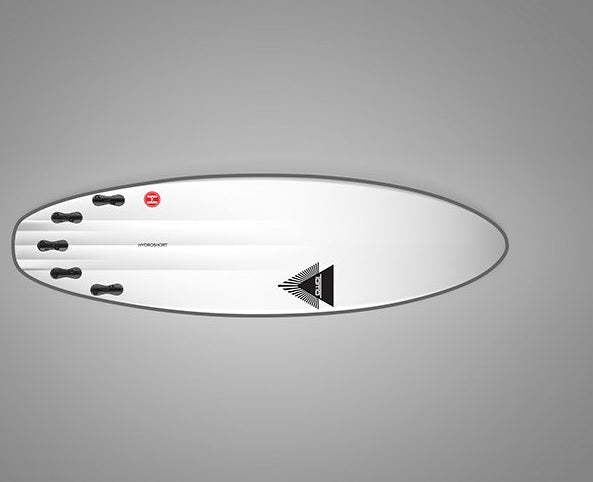
Since then, Timmy has been taking his Helium Hydroshort with him everywhere, and surfing in all types of waves, from pumping barrels to everyday grovels. He has even been taking it out for pumping swells at the Wedge! And with the added strength of the Helium construction, which is highly durable (with stringers running up the rails), has great flex characteristics, and even has “memory” built into the deckskin so that it rebounds to form after being compressed beneath your feet, the board is more likely to survive the carnage of Newport Beach’s craziest closeout! The Helium Hydroshort is literally a board for any conditions!
Guy Hagi’s Pacific Pulse

Most of us have seen Guy Hagi on the news, giving us the weekly weather forecast and the daily surf report. Guy also hosts Hawaii News Now’s ocean-themed spot Pacific Pulse, which features interviews and stories from surfers and other ocean-going folk. The show is a natural fit, since Guy himself is a passionate surfer, often seen in the various lineups here in Town. He also has experience in the surf industry, haven’t worked as a rep for Rip Curl and other surf brands for 20 years!
Guy stopped by Hawaiian South Shore this past week to chat with us for an episode of Pacific Pulse, focused on the fact that, even though the economy has been brought to a standstill by the COVID-19 pandemic, surfboard sales (and the sales of surf hard goods in general) are through the roof the past few months. We believe this is because schools and a lot of offices have been closed and a lot of people have had more free time than usual—but the ocean has remained open! With both kids and their parents looking for ways to stay busy during the COVID-19 shutdown, more and more parents are taking their keiki out to surf together, only to realize that the boards that used to float them aren’t adequate anymore. This leads to them coming in to check out our selection of new boards—and then once they get new boards, their kids end up wanting new boards too!
Even though this pandemic crisis has been hard on all of us, it has also been nice to reconnect with a lot of our customers who have been too busy working to surf over the past few years, but who are now rediscovering their stoke for the ocean. It feels good to be able to inject some positivity into a dark time by helping people find the perfect boards to continue their relationship with the surf. After all, that’s why I started this shop in the first place!
The Hawaiian South Shore crew was super honored to be featured on Guy Hagi’s Pacific Pulse show, and we hope that you caught it when it played live on TV! If not, you can always check out the archive of shows on HawaiiNewsNow’s website here, where the episode should be posted in a few months!
Brett Simpson Unanimously Selected As US Olympic Surf Coach
With the 2020 Olympics postponed due to the ongoing COVID-19 pandemic, surfing will have to wait until 2021 to get it’s Olympic debut—which means that US surfers John Florence, Kolohe Andino, Carissa Moore, and Caroline Marks will also have to wait another year before they can represent the Red, White, and Blue in Japan. But that doesn’t mean that the four US Olympic surfers are sitting around wasting time. In fact, last week it was announced that all four competitors unanimously selected Brett Simpson to be the US Olympic surf team coach.
Brett Simpson is a Huntington Beach local who spent years on the world tour. Although he never broke into the upper echelon on our, and often had to re-qualify through the QS, he was a strong competitive presence for nearly decade. He won back-to-back events at the US Open at Huntington Beach in 2009 and 2010 in front of his home crowd, placed third in Portugal in 2015, third in France in 2010, fifth at Trestles in 2016, and fifth in the Search event in 2011, and was considered one of the most likable surfers on tour. He is also known for his competitive savvy—a trait that the US Olympic team clearly hopes to capitalize on.
While all of the surfers that have made the Olympic team have their own coaches (Ross Williams has coached John Florence, Mitch Ross has coached Carissa Moore, and Mike Parsons coaches Kolohe Andino and Caroline Marks), Simpson will bring additional perspective and stability to the team when they compete in Japan, where the waves will likely be similar to an average day in Huntington Beach. Surf coaches typically serve as sounding boards for competitors, helping them make equipment decisions, taking notes on conditions such as rips and set frequency, and helping competitors stay grounded during high-stress situations. Other popular coaches over the years have included Brad Gerlach (who coached Connor and Parker Coffin) and Glenn “Micro” Hall (who coached Matt Wilkinson, Owen Wright, and two-time world champ Tyler Wright).
At the end of the day, it is up to the surfers to go out and perform at their best—but there’s nothing wrong with having a knowledgeable coach in your corner. Virtually all of the top surf coaches are former world tour competitors, many of whom have enjoyed top 10 finishes themselves. When John, Kolohe, Carissa, and Caroline head to Tokyo in 2021 for the Olympics, their own personal coaches
will likely come with them—but the additional support of Brett Simpson will be a welcome boon. If Brett’s career has taught us anything, it’s that there’s always room for more wisdom and positivity.
The ProLite Micro-Pad

ProLite has been an industry leader in surf accessories for years and is always working to improving its products. Over the year, their deck pads have gotten better and better—lighter, thinner, more comfortable, and more grippy and performance-oriented. Lately, they have transitioned from diamond-cut pads to a hybrid called the micro-dot pad. The micro-dot pad has a bunch of small, round dots on top of the pad, along with other patterns mixed in, such as semi-diamonds. This lower profile design makes it more comfortable for surfers, so there is less abrasion of the knees. And the design is actually grippier than the old style when it gets wet! Add to that the fact that it is thinner and less water-absorbent, and you have a thinner, lighter, more comfortable pad on your board!



